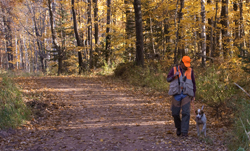Accuracy of location
Have you ever been frustrated with a young dog that puts bird after bird into the air after pointing for only a fleeting moment? Me, too!
But don’t be too quick to admonish your dog. After significant experience with many pointing dogs, I have learned that this type of young dog has the makings of a top-notch, wild bird dog that can provide exciting bird work and excellent shooting opportunities. Why? Because in the process of flushing all those birds, your young dog is learning one of the most important lessons of a pointing dog—accurate location.
Accurate location is essential to productive dog work and good shooting. Consider the alternative: continually walking in front of your dog on point and no birds flush. Anticipation fades and, more importantly, you no longer believe your dog. When you start second-guessing, you are down the wrong path!
How does a dog acquire accuracy of location?
First of all, the dog must have inherited the genetic traits of a strong nose and boldness towards birds. Dogs that demonstrate accurate location are more likely to produce dogs with similar abilities.
Secondly, the dog must be given ample opportunity on wild birds. He must be allowed freedom to match wits with a wild bird on its own turf and, ultimately, must be allowed the freedom to make mistakes. There is no shortcut for his step. Most dogs flush many birds before they learn.
Finally, the dog must be trained to hold point in a manner that doesn’t either diminish its boldness or increase its cautiousness.
Sound genetics, plentiful bird exposure and proven training techniques are crucial components to accurate location of the bird by a pointing dog.
Enjoy the process!




